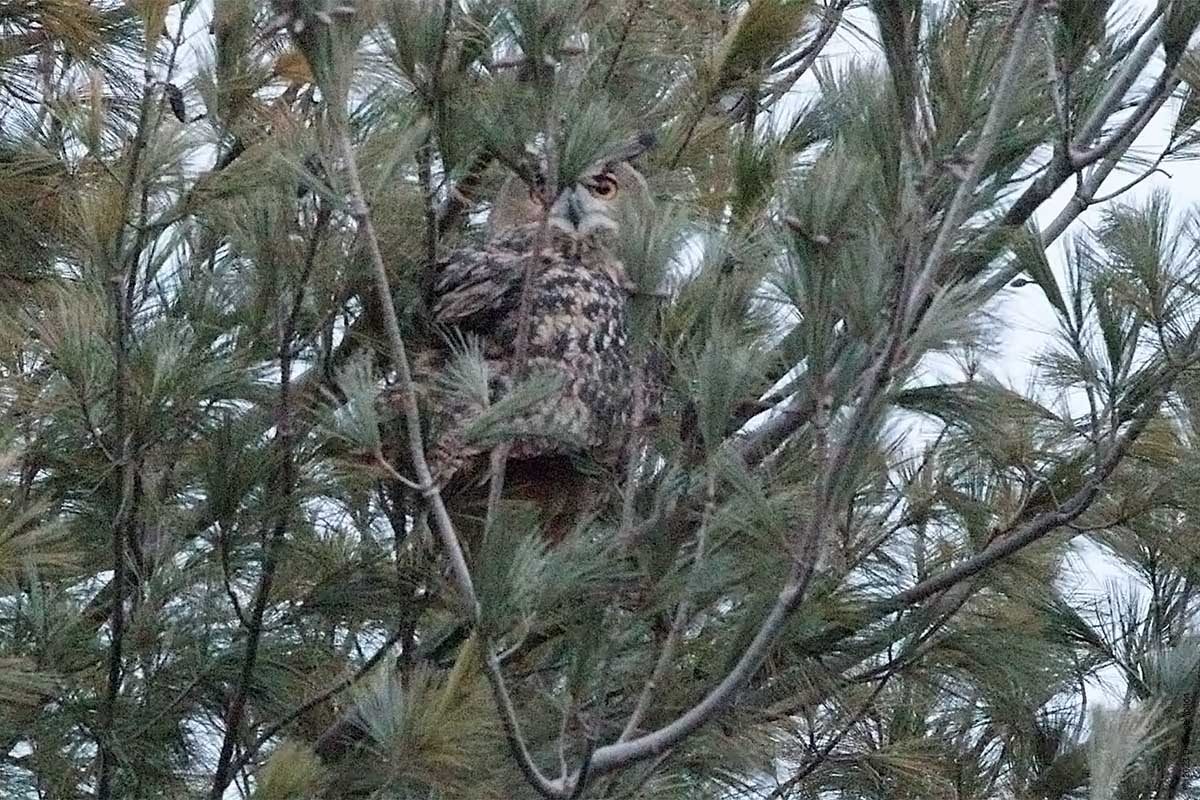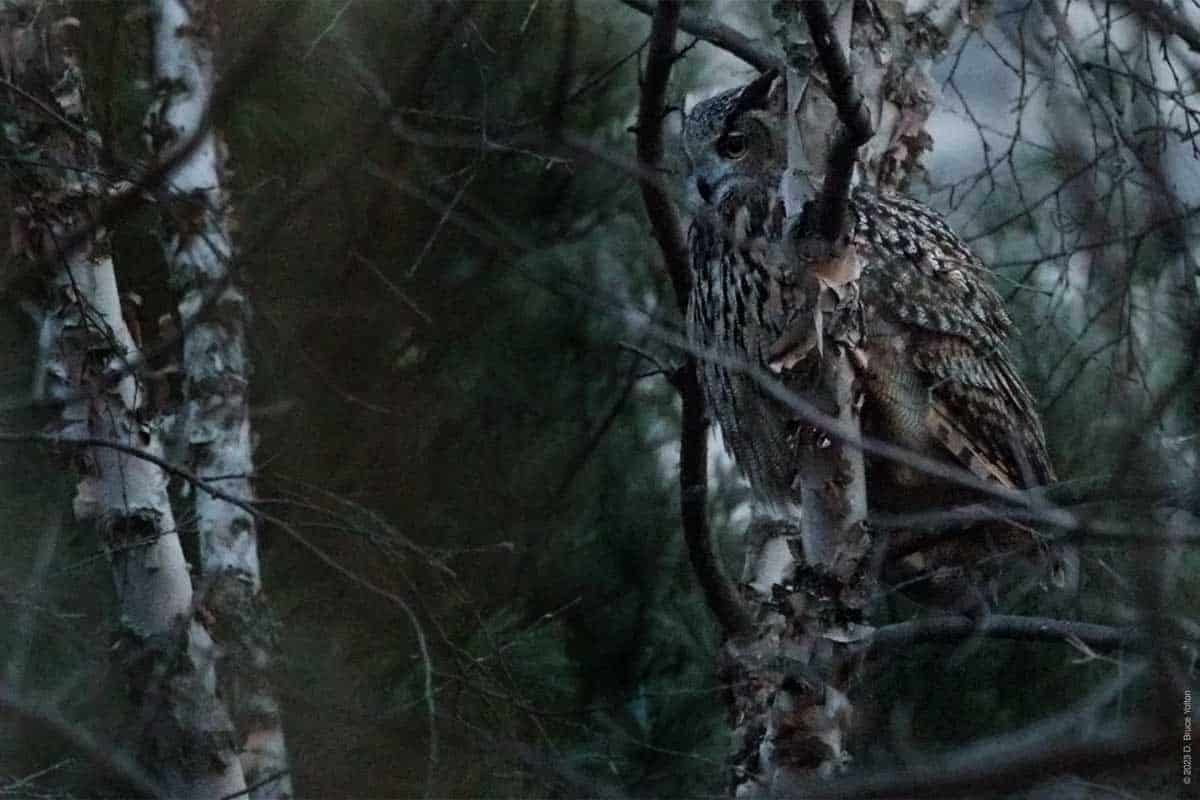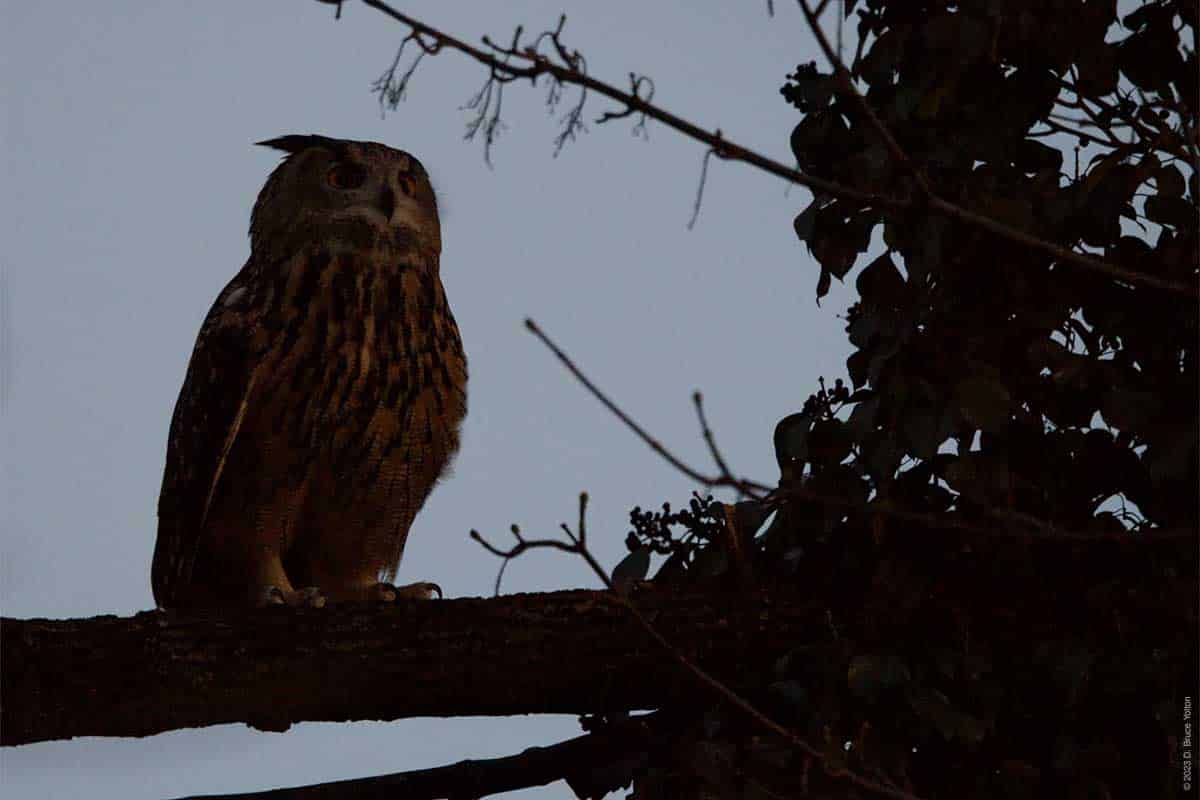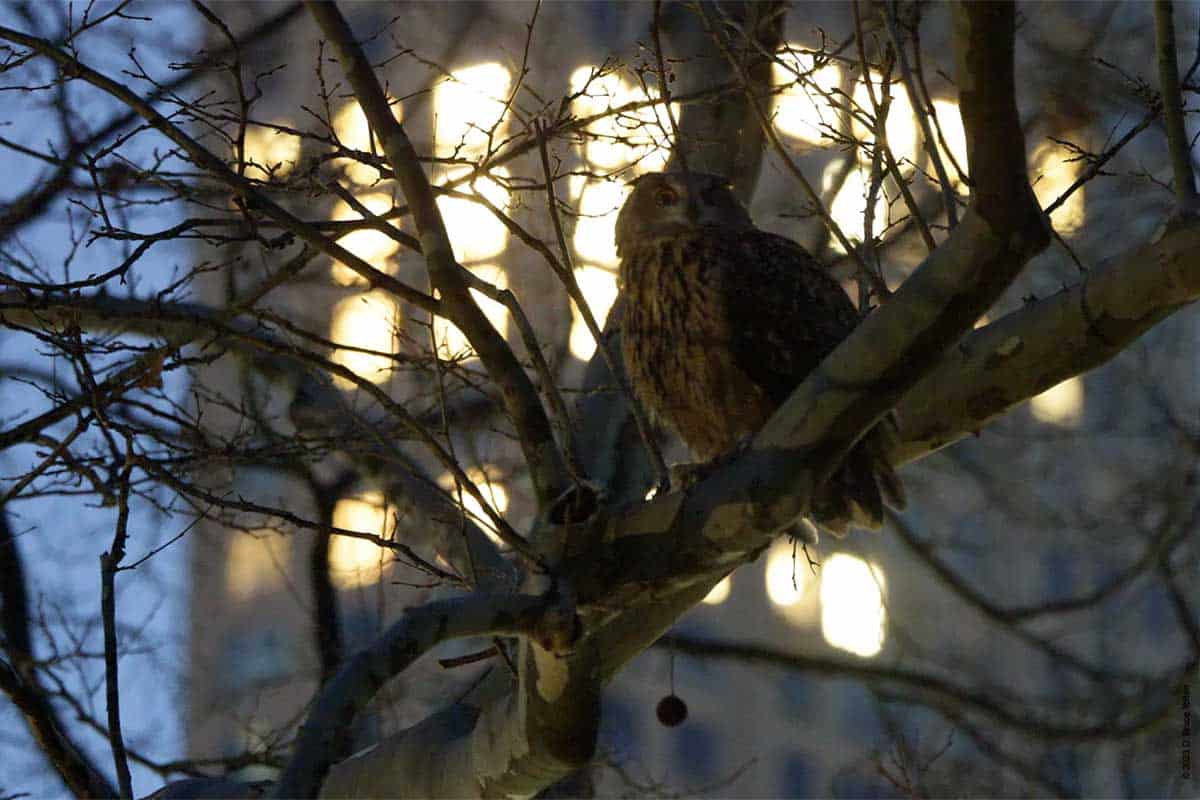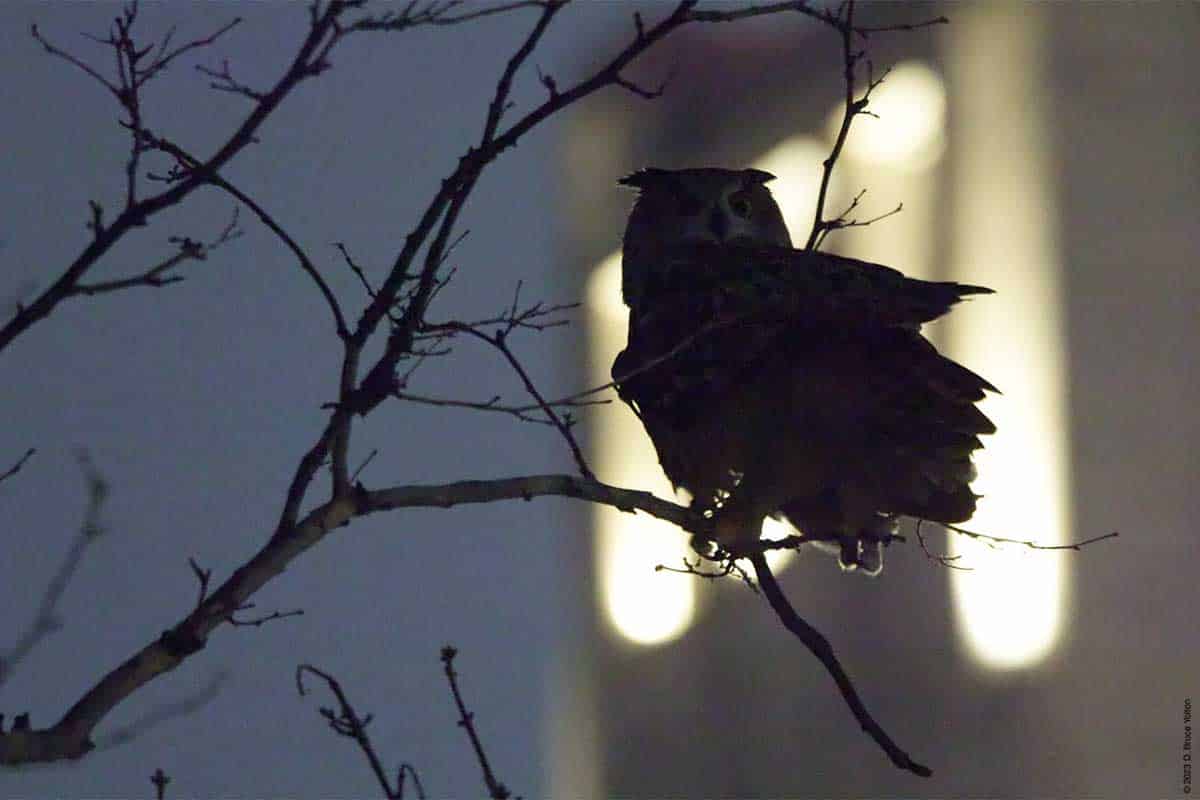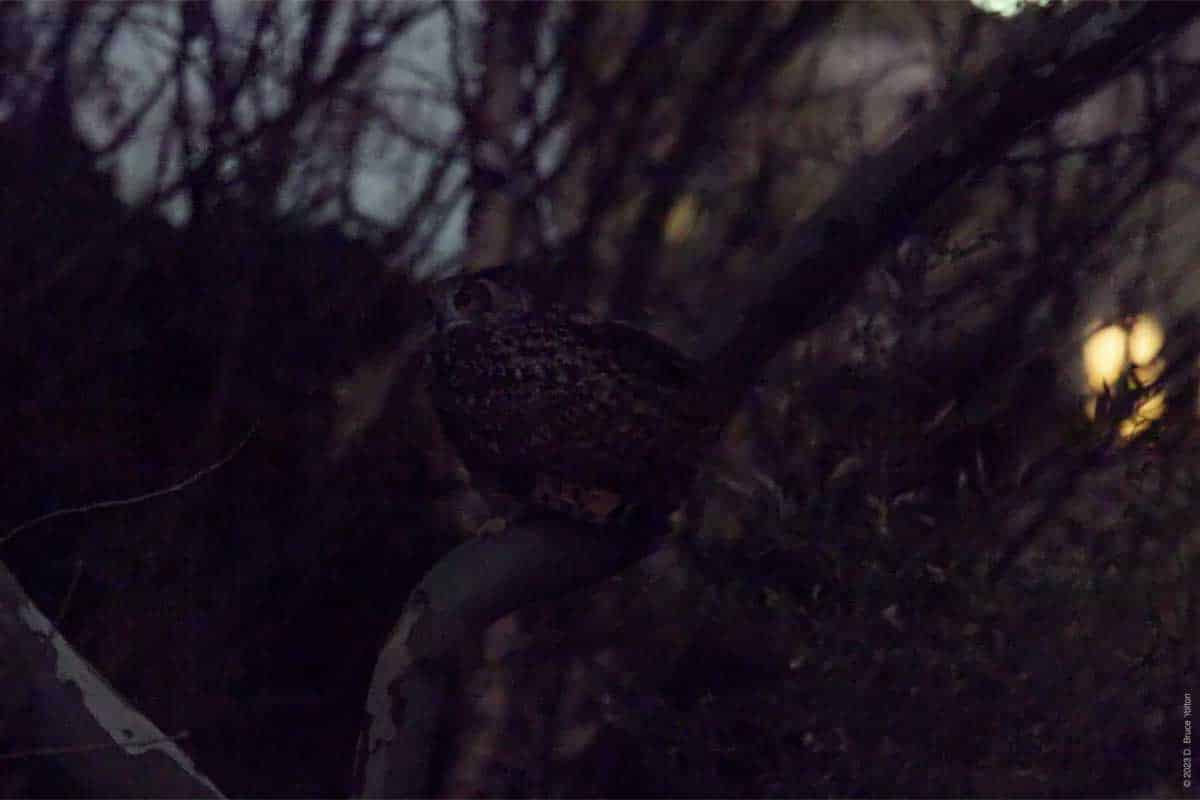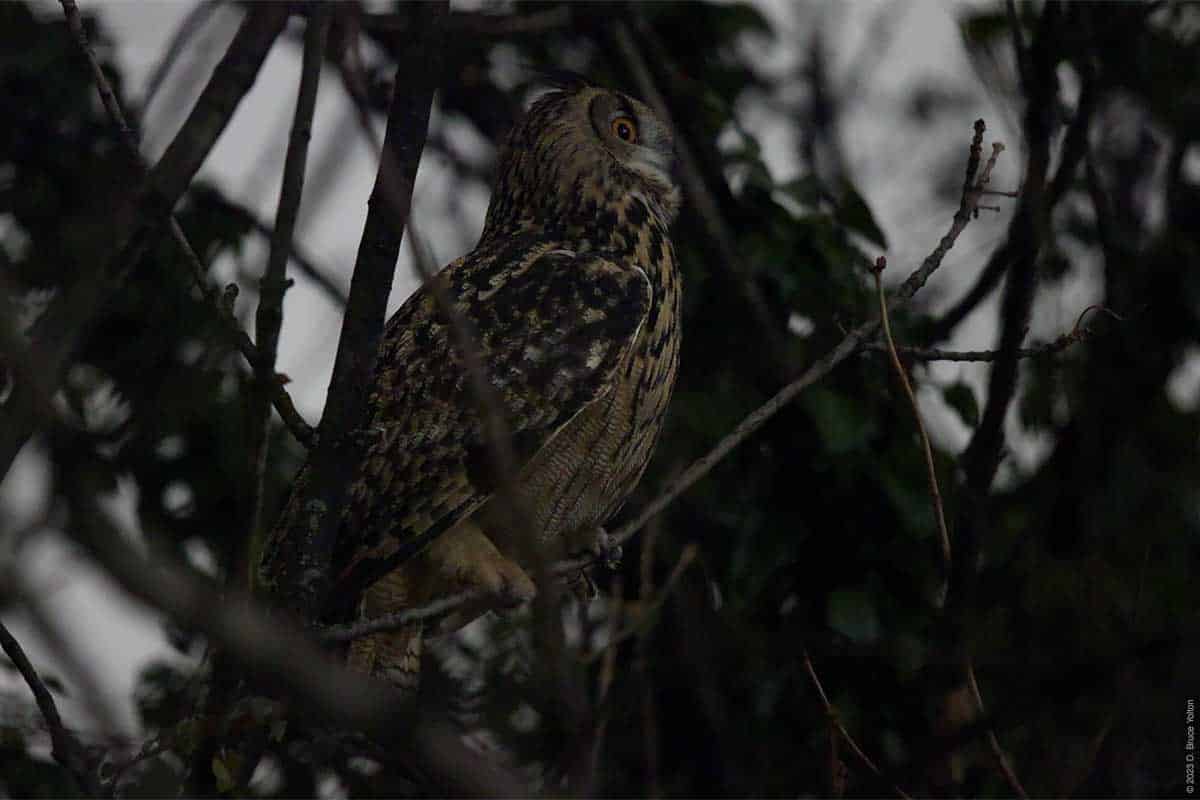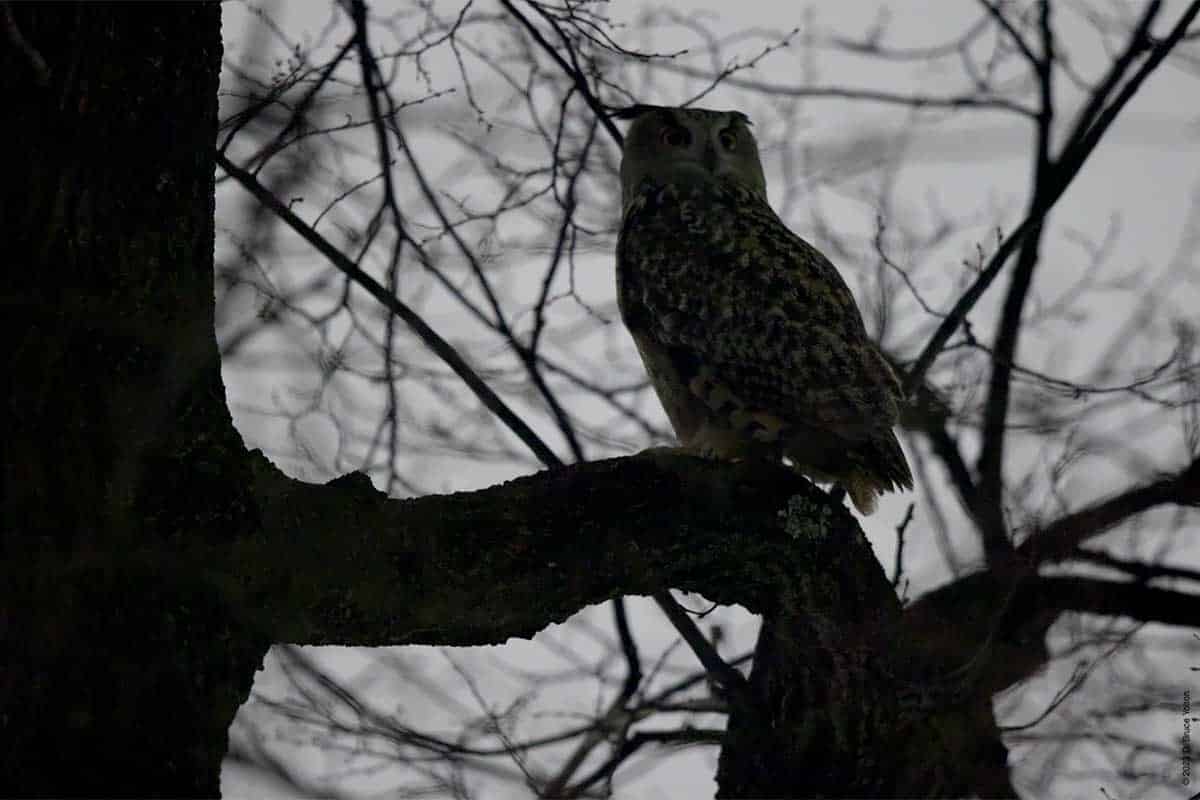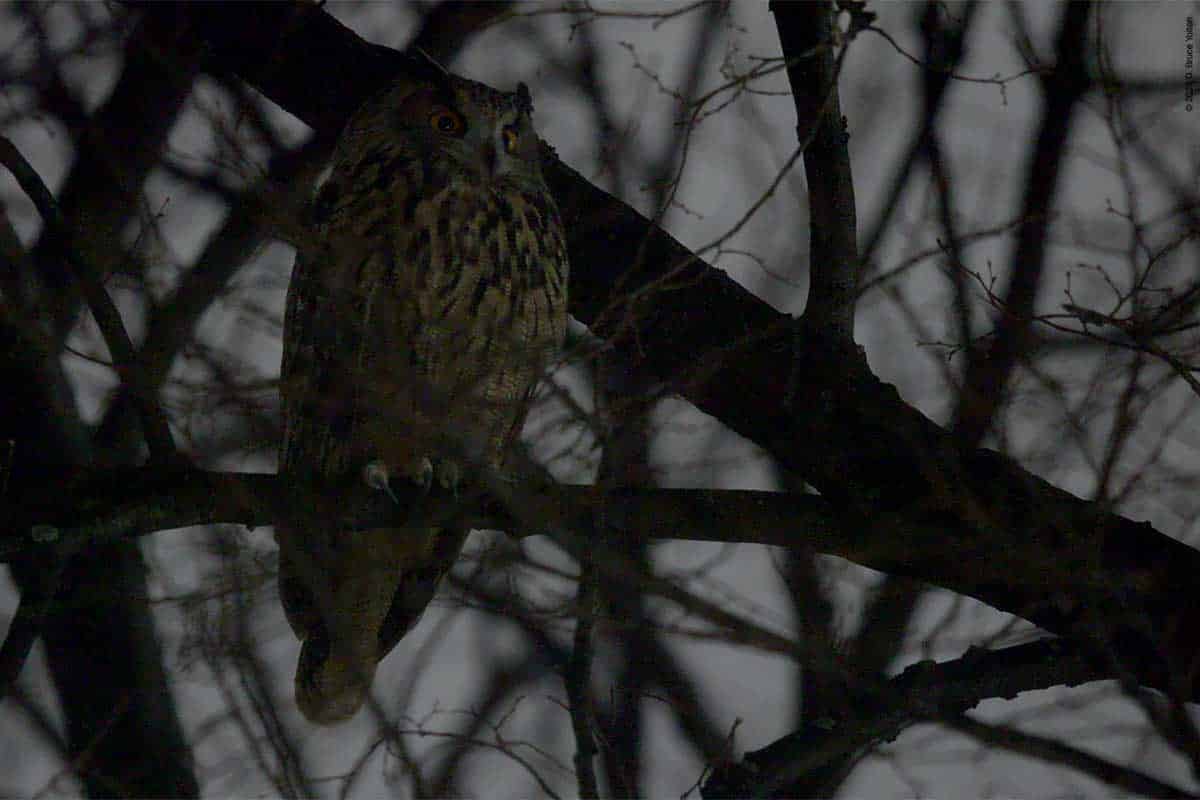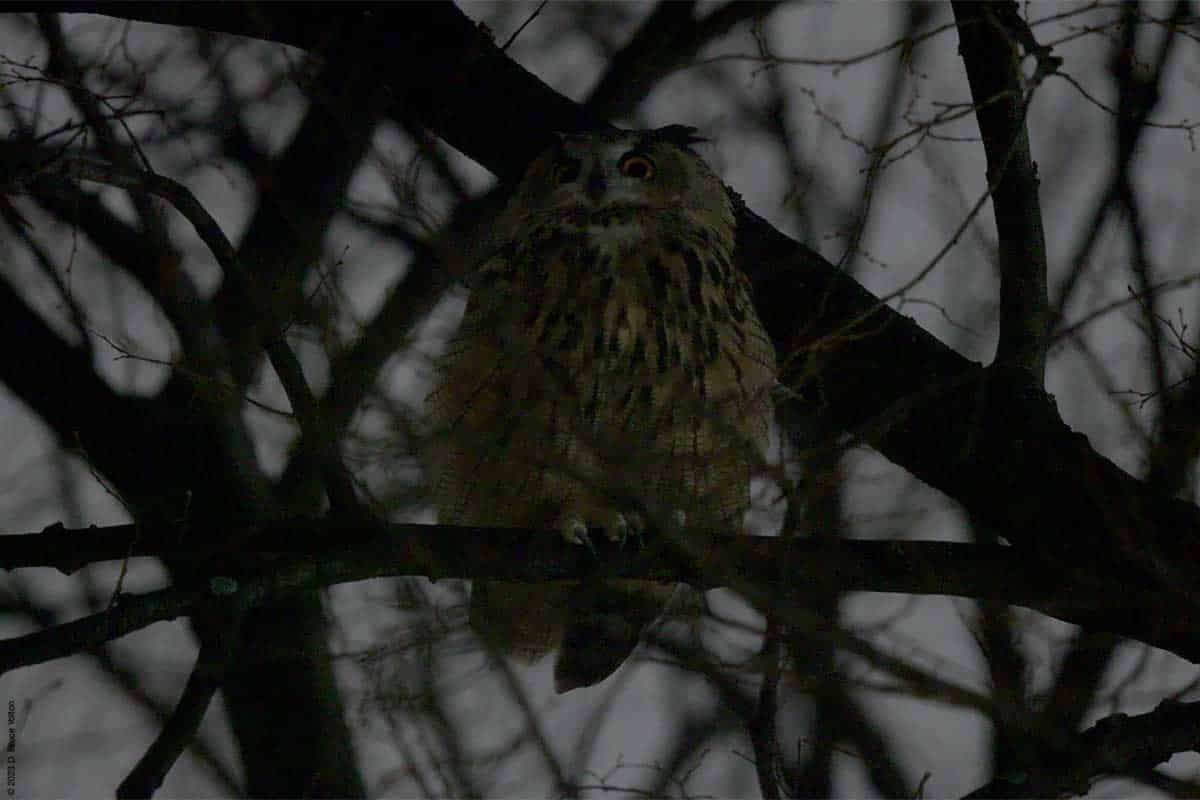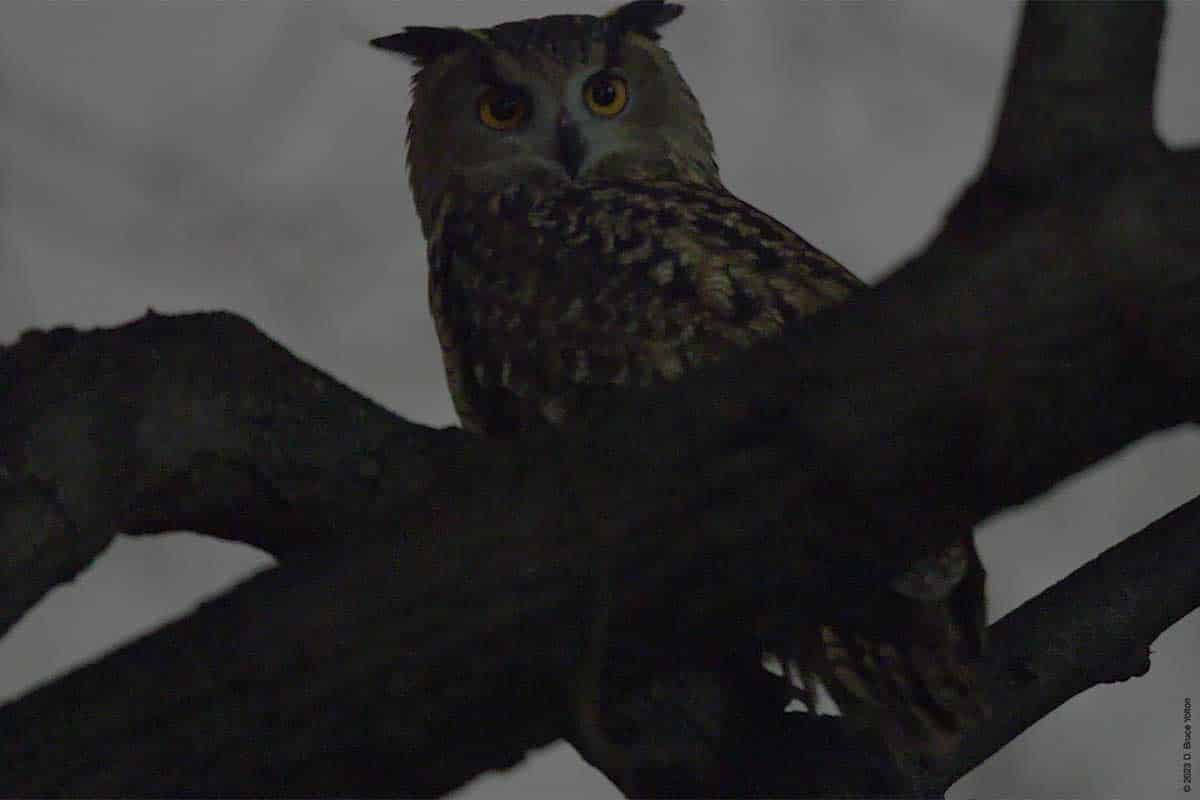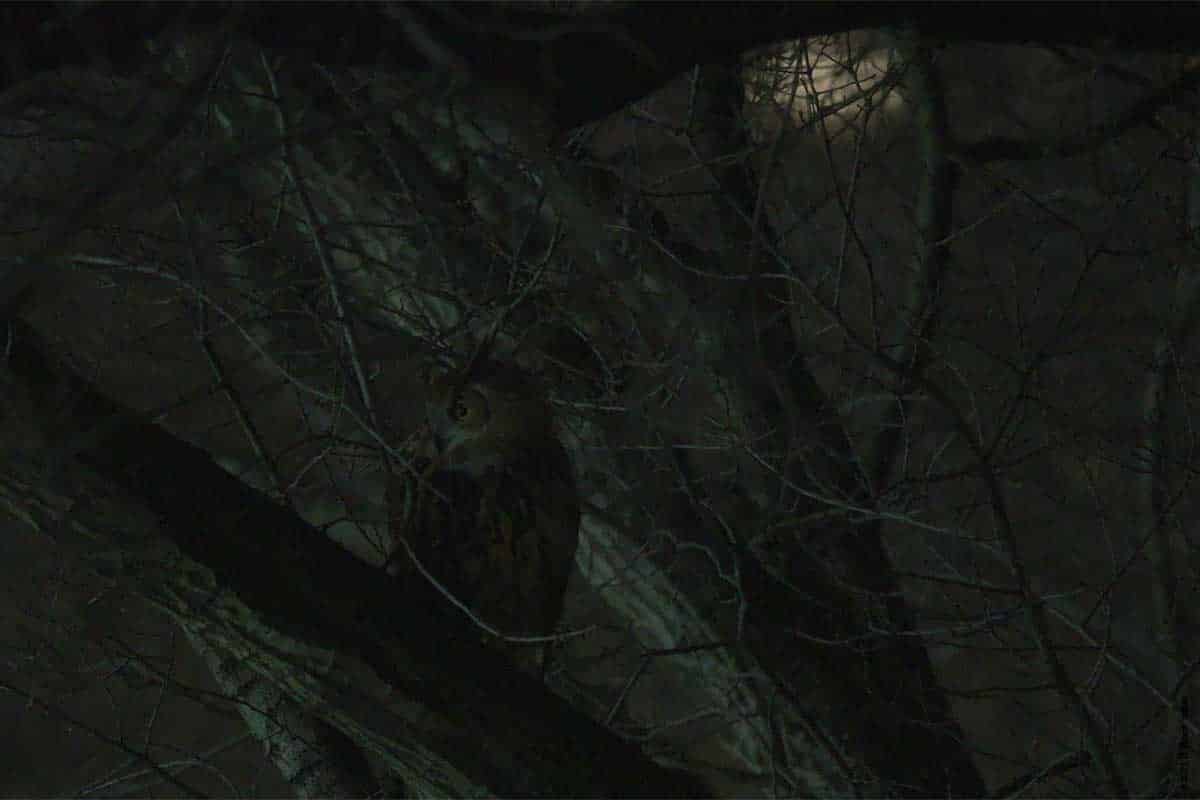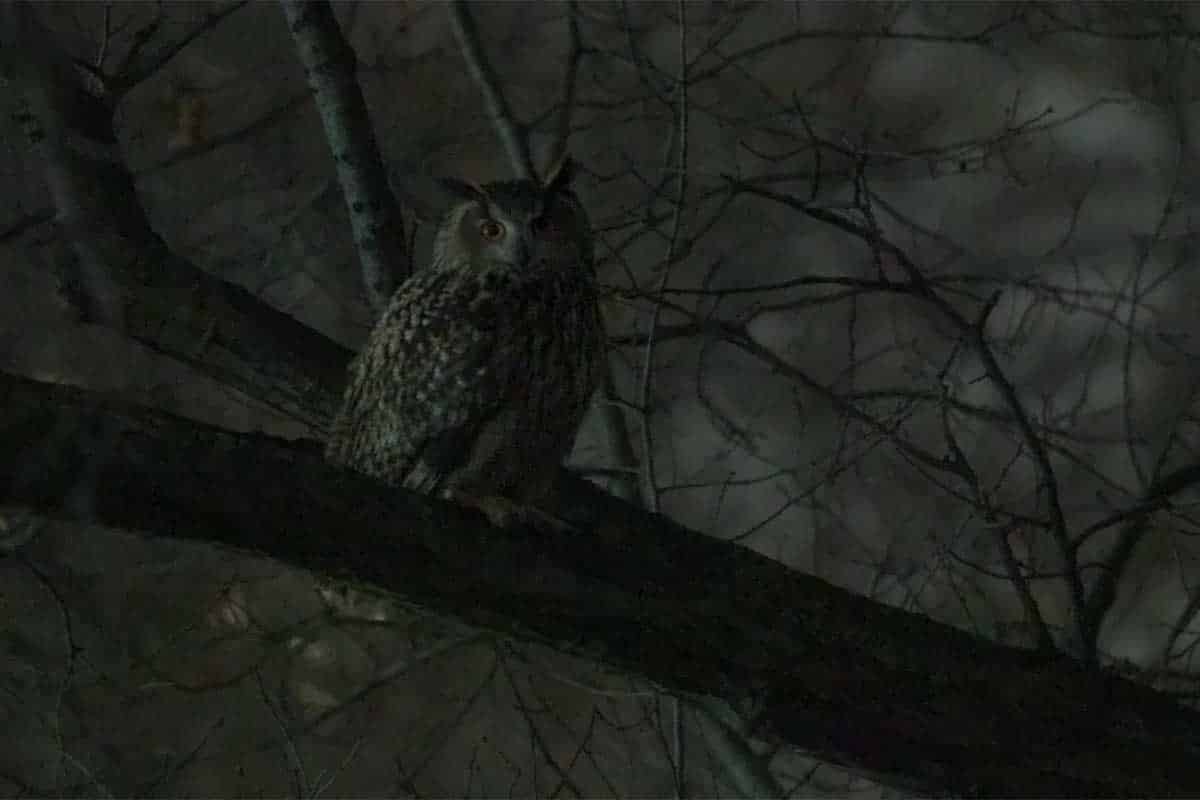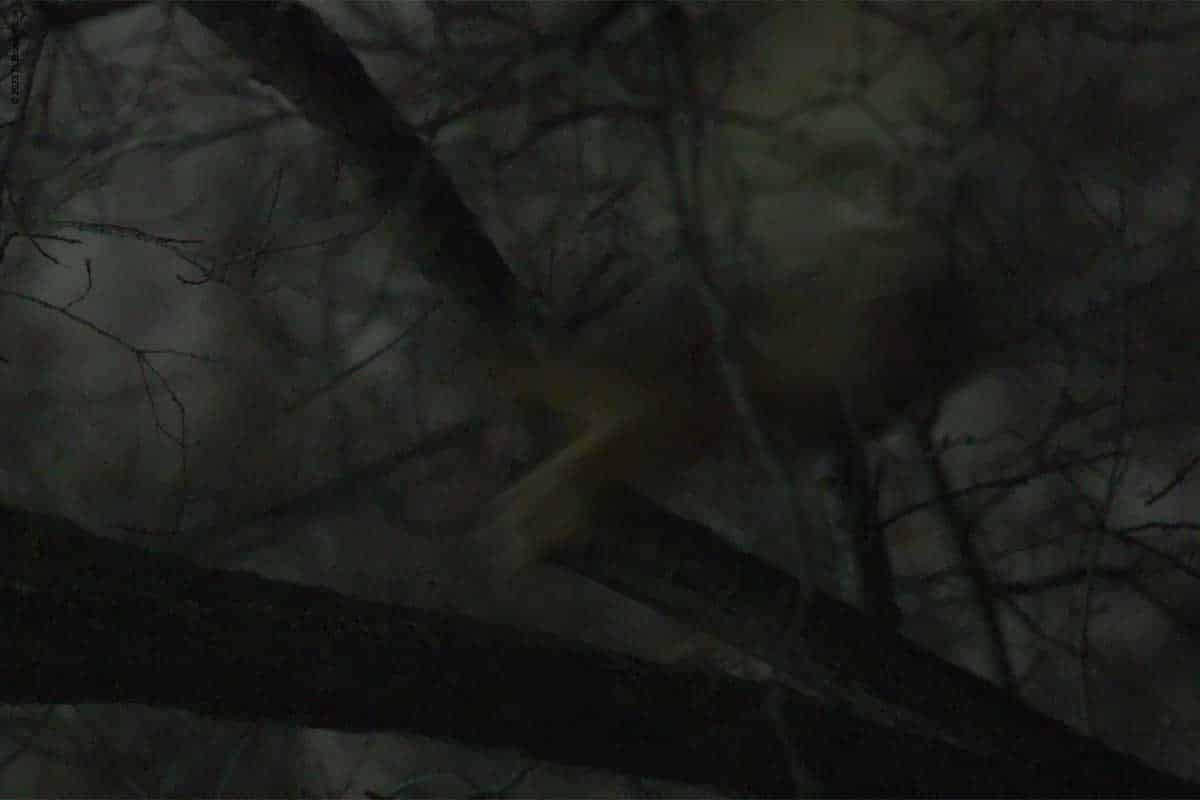I watched Flaco, the bird that was released by vandals from the Central Park Zoo, again from 4:30 to just before Midnight on Tuesday.
Over the last few days, it has been fascinating to watch a captive animal adjust to life outside its enclosure. Basic day-to-day skills are being learned and perfected each day. The behavior reminds me of what we see with Red-tailed Hawk fledglings. Flaco’s release has so many of the same elements.
- An awkward first few attempts at flying resulting in a brief time on the ground or on a sidewalk.
- Finding a high point in a tree for safety but not really knowing which branches to choose.
- Going to the highest spot to survey the area and be safe from predators.
- Then going lower and learning to explore tree branches within a single tree.
- Dealing with other birds and animals, which for Flaco has been Blue Jays, Tufted Titmouses, Eastern Raccoons and Gray Squirrels.
- Expanding their range, but also returning to their “nest site”, which for Flaco is the Central Park Zoo.
I’m amazed that this owl is learning so quickly. It is doing in a few days, what takes at least a month for Red-tailed Hawk fledgling.
I had started my day birding my way down from the Central Park Reservoir which still has a stunning immature Common Loon, down to look at our resident Great Horned Owl (who may have flown over the Eurasian Eagle-Owl around 10 pm) and then to the Zoo by 4:30 pm.
The Eurasian Eagle-Owl about 20 feet high in an ivy covered tree just inside the Central Park Zoo. It was surrounded by crowd of gawkers and photographers. It had found a good perch to roost in, and for the first time chose a camouflaged location. It was good to see that it had returned to “home base”.
At fly out, it went to a nearby tree, before going into the Zoo and perching in a conifer. Fairly quickly, it went across the East Drive and explored some trees.
Flaco then returned to the Zoo, spent a long time near an enclosure for cranes, and was for the most part out of view. While Eurasian Eagle-Owls get most of their water from their prey, this area of the Zoo has lots of open water including a loud waterfall, so this might be why the owl is attracted to this location.
At this point, I rushed home to switch out my lighter camera gear and scope I use during the day while birding, for a lens and tripod more suited for the low light of the night. When I returned, the owl became visible in the Zoo but then disappeared again. Out of the blue, it shot up to the top of tree it had roosting in during the day. Soon it went exploring, going to trees across the drive and then eventually going to a tree in the lawn below The Dairy. After loosing track of the bird, we rediscovered it just outside of Chess and Checkers, which is being renovated and surrounded by fences. After a few minutes, the owl dove into the construction site, and we couldn’t tell if it went into the area or just past it. At this point, just before midnight when I couldn’t locate the owl, I went home.
What a wonderful night. I find so much joy in studying a species and learning its behavior. I’ve done this for years with Red-tailed Hawks, Eastern Screech-Owls and Peregrine Falcons over the last seventeen years. Watching how this captive bird adjusts to being released has been an incredibly interesting. And it’s only a few block from my house in the middle of the Big Apple.
Having spoken to lots of onlookers seeing the owl for the first time, I have some advice. When Marie Winn, did her book tour for Central Park in the Dark, her follow up to Red-tails in Love, she was asked “What would you have done differently watching Pale Male?”. Her answer was she would have worried less.
So, rather than worrying and getting worked up not knowing if Flaco has eaten, when you’re watching him, study him. He has a lot to teach us about his species and how a captive animal manages when released abruptly.
The Wildlife Conservation Staff really cares about Flaco. While their staff is logically under a “don’t talk to the public about rescue plans” policy, spending a few days with them, it is clear they are doing everything they can to watch over this bird and return it safely to the Zoo. Don’t waste energy second guessing them.
